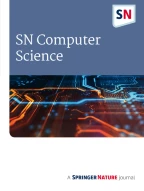Abstract
CNN (Convolutional Neural Network) models have been successfully used for segmentation of the left ventricle (LV) in cardiac MRI (Magnetic Resonance Imaging), providing clinical measurements. In practice, two questions arise with deployment of CNNs: (1) when is it better to use a shallow model instead of a deeper one? (2) how the size of a dataset might change the network performance? We propose a framework to answer them, by experimenting with deep and shallow versions of three U-Net families, trained from scratch in six subsets varying from 100 to 10,000 images, different network sizes, learning rates and regularization values. 1620 models were evaluated using five-fold cross-validation by loss and DICE. The results indicate that: sample size affects performance more than architecture or hyper-parameters; in small samples the performance is more sensitive to hyper-parameters than architecture; the performance difference between shallow and deeper networks is not the same across families.
Similar content being viewed by others
Research Data
The data used in this research is available upon registration on the LVSC website: https://www.cardiacatlas.org/challenges/lv-segmentation-challenge/.
Code Availability
The code developed in this research is intellectual property of Zerbini Foundation and FoxConn and cannot be disclosed by the authors at this moment.
References
Akaike H. A new look at the statistical model identification. IEEE Trans Autom Control. 1974;19(6):716–23.
Aziz YFA, Fadzli F, Rizal Azman R, Mohamed Sani F, Vijayananthan A, Nazri M. State of the heart: Cmr in coronary artery disease. Curr Med Imaging. 2013;9(3):201–13.
Bartlett PL, Foster DJ, Telgarsky M. Spectrally-normalized margin bounds for neural networks. Adv Neur Inf Proc Sys. 2017;30:6241–50.
Benkendorf DJ, Hawkins CP. Effects of sample size and network depth on a deep learning approach to species distribution modeling. Ecol Inf. 2020;60:101137.
Chaurasia A, Culurciello E. Linknet: exploiting encoder representations for efficient semantic segmentation. 2017. p. 1–4. https://doi.org/10.1109/VCIP.2017.8305148.
Chen C, Qin C, Qiu H, Tarroni G, Duan J, Bai W, Rueckert D. Deep learning for cardiac image segmentation: a review. Front Cardiovasc Med. 2020;7:25.
Dice LR. Measures of the amount of ecologic association between species. Ecology. 1945;26(3):297–302.
Ghavami N, Hu Y, Gibson E, Bonmati E, Emberton M, Moore CM, Barratt DC. Automatic segmentation of prostate mri using convolutional neural networks: Investigating the impact of network architecture on the accuracy of volume measurement and mri-ultrasound registration. Med Image Anal. 2019;58:101558.
Hastie TJ, Tibshirani RJ. Generalized additive models, vol. 43. Boca Raton: Chapman & Hall/CRC; 1990.
He K, Zhang X, Ren S, Sun J. Deep residual learning for image recognition. In: Proc. IEEE CVPR, 2016. p. 770–8.
Hu J, Shen L, Sun G. Squeeze-and-excitation networks. In: Proc. IEEE CVPR, 2018. p. 7132–41.
Lin TY, Dollár P, Girshick R, He K, Hariharan B, Belongie S. Feature pyramid networks for object detection. In: Proc. IEEE CVPR, 2017. pp. 2117–25.
Martin CH, Mahoney MW. Rethinking generalization requires revisiting old ideas: statistical mechanics approaches and complex learning behavior. arXiv preprint arXiv:1710.09553, 2018.
Neyshabur B, Li Z, Bhojanapalli S, LeCun Y, Srebro N. The role of over-parametrization in generalization of neural networks. In: Proc. ICLR. 2019. p. 1–20.
Oktay O, Schlemper J, Folgoc LL, Lee M, Heinrich M, Misawa K, Mori K, McDonagh S, Hammerla NY, Kainz B, et al. Attention u-net: Learning where to look for the pancreas. In: Proc. Conf. MIDL–medical imaging with deep learning. 2018. p. 1–10.
Ronneberger O, Fischer P, Brox T. U-net: convolutional networks for biomedical image segmentation. In: MICCAI. LNCS. 2015;9351:234–41.
Sandler M, Howard AG, Zhu M, Zhmoginov A, Chen L. Mobilenetv2: inverted residuals and linear bottlenecks. In: Proc. IEEE CVPR, 2018; p. 4510–20. https://doi.org/10.1109/CVPR.2018.00474.
Shahinfar S, Meek P, Falzon G. how many images do i need? understanding how sample size per class affects deep learning model performance metrics for balanced designs in autonomous wildlife monitoring. Ecol Inf. 2020;57:101085.
Simonyan K, Zisserman A. Very deep convolutional networks for large-scale image recognition. In: Proc. ICLR. 2015;1–14.
Spencer JH, Quill JL, Bateman MG, Eggen MD, Howard SA, Goff RP, Howard BT, Quallich SG, Iaizzo PA. The benefits of the atlas of human cardiac anatomy website for the design of cardiac devices. Expert Rev Med Devices. 2013;10(6):729–34. https://doi.org/10.1586/17434440.2013.843449.
Suinesiaputra A, Cowan BR, Al-Agamy AO, Elattar MA, Ayache N, Fahmy AS, Khalifa AM, Medrano-Gracia P, Jolly MP, Kadish AH, et al. A collaborative resource to build consensus for automated left ventricular segmentation of cardiac mr images. Med Image Anal. 2014;18(1):50–62.
Tabachnick BG, Fidell LS. Experimental Design Using ANOVA. Belmont: Duxbury; 2007.
Tan M, Chen B, Pang R, Vasudevan V, Sandler M, Howard A, Le QV. Mnasnet: platform-aware neural architecture search for mobile. In: Proc. IEEE/CVF CVPR, 2019; p. 2820–8.
Tan M., Le, Q. Efficientnet: rethinking model scaling for convolutional neural networks. In: Proc. ICML, PMLR 2019; p. 6105–14.
Zhao H, Shi J, Qi X, Wang X, Jia J. Pyramid scene parsing network. In: Proc. IEEE CVPR, 2017; p. 2881–90.
Zhou Z, Siddiquee MMR, Tajbakhsh N, Liang J. Unet++: a nested u-net architecture for medical image segmentation. In: Stoyanov D, Taylor Z, Carneiro G, Syeda-Mahmood T, et al., editors. Deep learning in medical image analysis and multimodal learning for clinical decision support. Springer; 2018. p. 3–11.
Acknowledgements
The authors thank Zerbini Foundation and FoxConn for supporting this research; A. Marco, C. Graves, D. Cardenas, J. Ferreira Jr. and R. Pereira for discussing ideas about experiments in practical scenarios; R. Moreno and M. Rebelo for initial manuscript revision and feedback.
Funding
This research was supported by Zerbini Foundation and FoxConn projects AIMED-CATI 030/2007 and FOXCONN-001/2019.
Author information
Authors and Affiliations
Corresponding author
Ethics declarations
Conflict of interest/Competing interests
The authors declare that they have no conflict of interest.
Additional information
Publisher's Note
Springer Nature remains neutral with regard to jurisdictional claims in published maps and institutional affiliations.
Rights and permissions
About this article
Cite this article
Toledo, M.A.F., Lima, D.M., Krieger, J.E. et al. Study of CNN Capacity Applied to Left Ventricle Segmentation in Cardiac MRI. SN COMPUT. SCI. 2, 480 (2021). https://doi.org/10.1007/s42979-021-00897-x
Received:
Accepted:
Published:
DOI: https://doi.org/10.1007/s42979-021-00897-x
